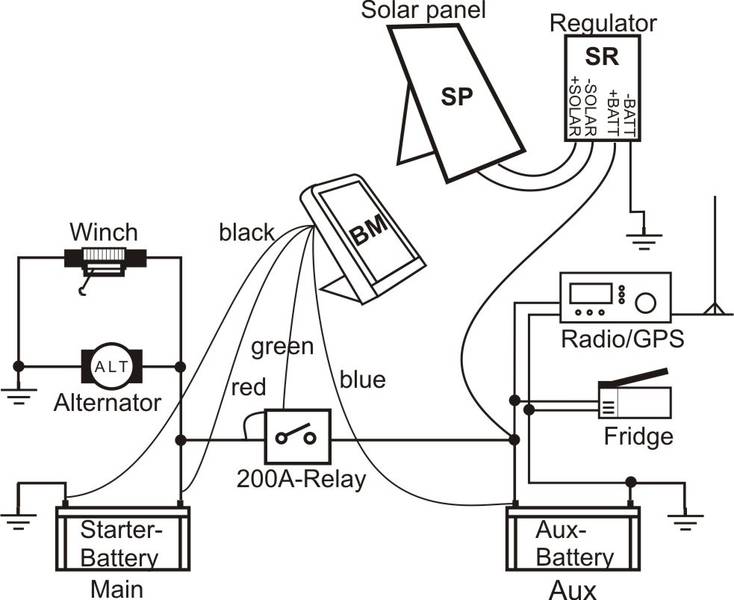Sean Slavin
Adventurist
I'm doing some noodling on how I want to setup dual batteries. Leaning heavily towards the IBS system. Right now, I'm thinking of building a box in the bed to hold the second battery, compressor and inverter. I'm basing the wiring plan around this diagram from IBS.

I'm going to attach the SwitchPros unit to the main battery. It will handle lights, lockers and compressor. I'm considering attaching the inverter to the aux battery. I'll want to use it for running photography gear and charging laptops/batteries.
How would I go about calculating the draw on the aux battery? I'd like to not drain the battery after having a bunch of strobes and a laptop plugged into the inverter.
I have a background in engineering, just not electrical, so this is a bit new to me.

I'm going to attach the SwitchPros unit to the main battery. It will handle lights, lockers and compressor. I'm considering attaching the inverter to the aux battery. I'll want to use it for running photography gear and charging laptops/batteries.
How would I go about calculating the draw on the aux battery? I'd like to not drain the battery after having a bunch of strobes and a laptop plugged into the inverter.
I have a background in engineering, just not electrical, so this is a bit new to me.


